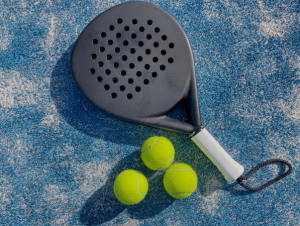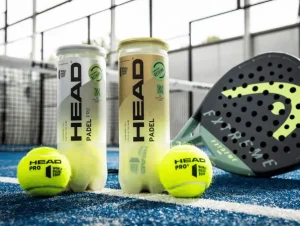How to Choose the Right Padel Racket
For newcomers to padel, selecting the right racket can feel overwhelming, especially when high price tags make the sport seem even more inaccessible.
In many countries, court rentals and coaching fees are already substantial, so adding the cost of an expensive racket can be discouraging.
The good news? You don’t need to break the bank to find a racket that’s perfect for starting your padel journey. Affordable options often work just as well for beginners.
Padel Rackets for Advanced Players
At the elite level, choosing the right racket can refine your performance. Small differences in design—such as balance, weight, and material—might subtly enhance certain aspects of a high-level player’s game.
That said, even professional players can adapt quickly to slight variations in rackets as long as they align with their general preferences.
For instance, consider two top players, Bela and Tapia, who previously played together. Despite being among the best in the world, they use vastly different rackets. Bela prefers a harder, heavier racket weighing around 390-395g, while Tapia opts for a softer, lighter racket weighing 355-360g. Such contrasts highlight the variety available even at the highest level of play.
Starting Out in Padel
When you’re just starting, the sheer number of padel rackets on the market can feel overwhelming. With thousands of models from dozens of brands—many of which are produced in only a handful of factories—it’s easy to feel lost.
Major brands release over 20 new racket models each year, and you can also find older models from previous seasons. The options seem endless.
New players often get caught up in searching for overly specific features—such as a 378g teardrop-shaped racket with a specific balance and sweet spot—when, in reality, you don’t need to overcomplicate things. If you’re new to padel, focus on general characteristics rather than obsessing over minute details.
Experiment with Different Rackets
Recommendations from other players can be helpful, but the best way to find the right racket is to test different models yourself.
We typically advise beginners to start with a light and soft racket, but don’t be afraid to branch out. Experimentation is key to understanding what complements your playing style and physical needs.
While premium rackets are often made with high-quality materials, lower-cost models are frequently sufficient for beginners. If you’re on a budget, consider exploring options outside the high-end range. Borrowing rackets from fellow players is another great way to try before you buy.
Be open-minded when testing different models, and focus on how the racket feels during play rather than being swayed by brand reputation or price.
Tips for Testing Rackets
If you don’t have access to a wide selection of rackets in stores, ask other players if you can borrow theirs for a quick test. When you try out a racket, pay attention to its weight, balance, and grip, and think about how these factors influence your comfort and control during a game. Remember that getting used to a new racket takes time, so don’t make snap judgments based on one or two practice sessions.
Final Thoughts
For the first couple of years of playing padel, don’t stress too much about finding the “perfect” racket.
Instead, view each new racket as an opportunity to experiment and learn what works best for your evolving skill set. As your abilities improve, you may discover you prefer different features in a racket.
Finally, don’t be discouraged if your performance dips when you start using a new racket.
It’s common to need time to adjust. Even experienced players can take several sessions to feel natural with a new racket. The key is patience and persistence—stick with it, and the racket will feel like an extension of your game in no time.







